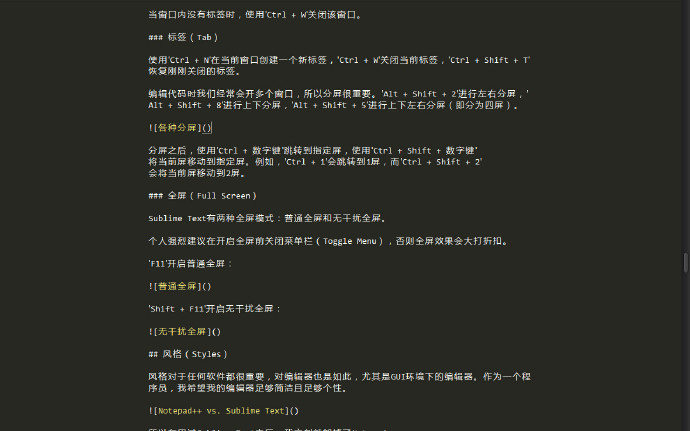Sublime Text Window and Tags
May 24, 2021 Sublime Text Use the manual
Table of contents
Windows and Tabs
Sublime Text is a multi-window multi-label editor: we can open multiple Sublime Text windows or multiple tags in one Sublime Text window.
Window
Create a new window using Ctrl s Shift s N (this shortcut again conflicts with the Sogou input method shortcut, and personally it is recommended to disable all Sogou input shortcuts).
When there are no labels in the window, close the window using Ctrl and W.
Tags (Tab)
Create a new label in the current window using Ctrl-N, ctrl-W to close the current label, and Ctrl-Shift-T to restore the label that just closed.
We often open multiple windows when editing code, so split-screening is important. Alt s Shift s 2 for left and right split screen, Alt s Shift s 8 for up and down screen, Alt s Shift plus 5 for up and down left and right screen (i.e. divided into four screens).

After splitping the screen, jump to the specified screen using the Ctrl plus number keys, and use the Ctrl plus Shift plus number keys to move the current screen to the specified screen. For example, Ctrl plus 1 jumps to 1 screen, while Ctrl plus Shift plus 2 moves the current screen to 2 screens.
Full Screen
Sublime Text has two full-screen modes: normal full-screen and non-jamming full-screen.
Personally, it is highly recommended to turn off the Toggle Menu before turning on full screen, otherwise the full screen effect will be greatly reduced.
F11 switch normal full screen:

Shift-F11 switch interference-free full screen:
